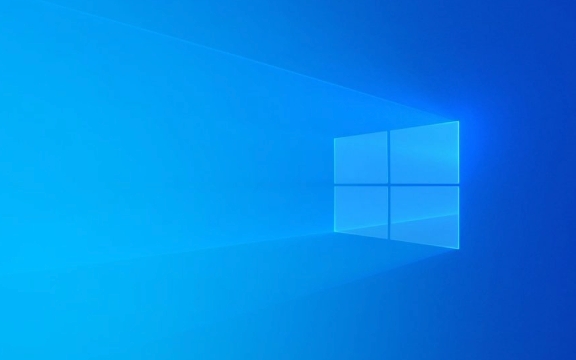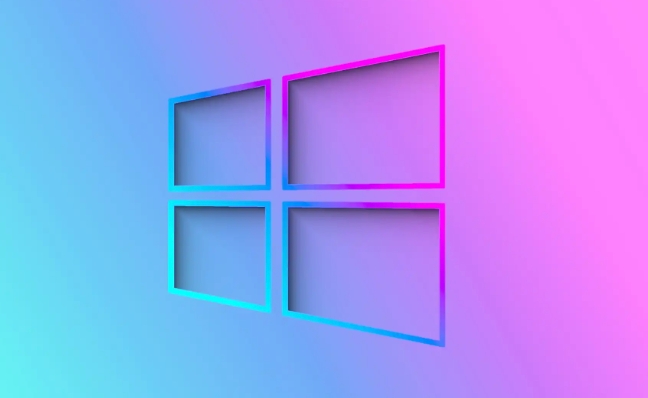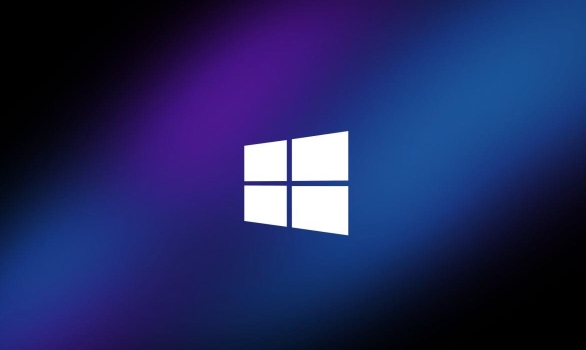How to create a bootable USB drive for Windows?
Jul 26, 2025 am 07:57 AMTo create a bootable Windows USB drive, select the right tools and mirror files and follow the steps. 1. Prepare USB drives above 8GB, networked computers, official ISO files and production tools such as Media Creation Tool or Rufus; 2. Use Media Creation Tool to quickly create the latest system installation disk. It takes about 10 to 20 minutes to write to USB drive after selecting the corresponding language and version; 3. Rufus provides more customization options, supports loading any ISO files and selecting partition plans; 4. After the production is completed, you need to enter the BIOS/UEFI setting to turn off Secure Boot, adjust the startup sequence, and confirm using the USB drive to boot; the parameters need to be carefully selected throughout the process to ensure successful installation.

Creating a bootable Windows USB drive is not actually complicated. As long as the methods and tools are right, most people can complete it smoothly. The key is to select the right image file, use reliable production tools, and ensure that the operation steps are not wrong.

Prepare the necessary materials
Before you start, you need to prepare the following:
- A USB drive with a capacity of at least 8GB (USB 3.0 or newer is recommended)
- A computer that is already connected to the internet
- Windows' official ISO image file (can be downloaded from Microsoft's official website)
- A production tool, such as Microsoft's official Media Creation Tool or third-party tools such as Rufus, Ventoy, etc.
The USB drive will be formatted, so remember to back up the data in advance.

Quickly create using official Microsoft tools
If you just want to install the latest version of Windows 10 or Windows 11, Microsoft's own Media Creation Tool is the most worry-free choice.
- Download and run the Media Creation Tool
- After accepting the license terms, select Create installation media for another computer
- Select language, version, and architecture (usually 64-bit)
- Insert the USB drive, the program will automatically recognize and prompt you to start writing.
This process takes about 10 to 20 minutes, and the specific time depends on your USB drive speed.

Make a more flexible boot disk with Rufus
If you need more control options, such as choosing a specific partitioning scheme, booting methods, or using unofficial ISO files, Rufus is a great option.
- Download and open Rufus (no installation required)
- Insert the USB drive and the program will automatically recognize it
- Click the disc icon in "Boot Selection" to load your prepared ISO file
- Select the "MBR" or "GPT" partition plan according to the motherboard type of the target computer
- Click "Start" to confirm the format warning and execute it
Rufus supports many older system versions and is also suitable for fixing the inability to use official tools.
Pay attention to BIOS/UEFI setup issues
Sometimes even if the USB drive is ready, the computer still refuses to recognize it, which is usually due to the BIOS or UEFI setup problem.
- The shortcut keys to enter the BIOS are generally F2, F12, Del or Esc, and there are slight differences between different brands.
- Make sure "Secure Boot" is turned off, or set to "Other OS" mode
- Check the startup sequence and set the USB drive as the first startup item
Some computers also distinguish between "Legacy" and "UEFI" startup methods. If the installation of the system fails, you can try to switch.
Basically that's it. The whole process is not difficult, but be careful not to choose the wrong options at each step, especially the partition and boot mode part, otherwise it may not be possible to install the system normally.
The above is the detailed content of How to create a bootable USB drive for Windows?. For more information, please follow other related articles on the PHP Chinese website!

Hot AI Tools

Undress AI Tool
Undress images for free

Undresser.AI Undress
AI-powered app for creating realistic nude photos

AI Clothes Remover
Online AI tool for removing clothes from photos.

Clothoff.io
AI clothes remover

Video Face Swap
Swap faces in any video effortlessly with our completely free AI face swap tool!

Hot Article

Hot Tools

Notepad++7.3.1
Easy-to-use and free code editor

SublimeText3 Chinese version
Chinese version, very easy to use

Zend Studio 13.0.1
Powerful PHP integrated development environment

Dreamweaver CS6
Visual web development tools

SublimeText3 Mac version
God-level code editing software (SublimeText3)

Hot Topics
 How to Set Up a Dual Monitor Display on Windows
Jul 27, 2025 am 04:16 AM
How to Set Up a Dual Monitor Display on Windows
Jul 27, 2025 am 04:16 AM
TosetupdualmonitorsonWindows,firstcheckhardwarecompatibilitybyensuringyourGPUhasmultiplevideoportsandyouhavethecorrectcables;connectthesecondmonitor,poweronbothdisplays,andletWindowsdetectthemautomatically;thenopenDisplaysettings,identifyandarrangeth
 How to install Composer on Windows?
Jul 25, 2025 am 01:28 AM
How to install Composer on Windows?
Jul 25, 2025 am 01:28 AM
CheckPHPinstallationbyrunningphp-vinCommandPromptandensurePHPisinPATH.2.DownloadtheComposer-Setup.exeinstallerfromgetcomposer.org,runit,followthewizard,andallowsystem-wideinstallation.3.Verifyinstallationbyrunningcomposer--versioninanewCommandPromptt
 How to create a bootable USB drive for Windows?
Jul 26, 2025 am 07:57 AM
How to create a bootable USB drive for Windows?
Jul 26, 2025 am 07:57 AM
To create a bootable Windows USB drive, you need to select the right tools and mirror files and follow the steps. 1. Prepare 8GB or more USB drives, networked computers, official ISO files and production tools such as MediaCreationTool or Rufus; 2. Use MediaCreationTool to quickly create the latest system installation disk. It takes about 10 to 20 minutes to write to the USB drive after selecting the corresponding language and version; 3. Rufus provides more customization options, supports loading any ISO files and selecting partition plans; 4. After the production is completed, you need to enter the BIOS/UEFI setting to turn off SecureBoot, adjust the startup sequence, and confirm the startup using the USB drive; the parameters need to be carefully selected throughout the process to ensure installation
 How to fix 'There are currently no power options available'
Jul 27, 2025 am 01:22 AM
How to fix 'There are currently no power options available'
Jul 27, 2025 am 01:22 AM
First run the power troubleshooter, then use the administrator command prompt to execute the powercfg-restoredefaultschemes command to reset the power scheme, then update or reinstall the ACPI driver, check the Group Policy settings (Pro/Enterprise Edition only), run sfc/scannow to repair the system files, and determine whether it is a user profile problem by creating a new user account. In most cases, the power options will return to normal.
 Windows night light not working
Jul 29, 2025 am 05:34 AM
Windows night light not working
Jul 29, 2025 am 05:34 AM
Night mode cannot adjust the color temperature or does not take effect, which is usually caused by system settings or driving problems. First check whether night mode is actually enabled: go to Settings > System > Display, confirm that the "Night Mode" switch is on. If the gray is not selected, it may be a problem with the graphics card driver or system version; secondly, if the color temperature adjustment is invalid, you can try restarting the Explorer, use the registry to repair, reset the night mode settings, and turn off the conflicting third-party software; finally check the time and geographic location permissions: Ensure that the location is allowed in the privacy settings, and enable the automatic time and time zone setting function.
 How to install Windows on a RAID array
Jul 25, 2025 am 01:46 AM
How to install Windows on a RAID array
Jul 25, 2025 am 01:46 AM
The key to installing Windows to RAID arrays is to correctly prepare the driver and set up BIOS/RAID. 1. Download and prepare the corresponding model of RAID controller driver in advance to ensure that it matches the Windows version and system bit count; 2. Set SATA mode to RAID in BIOS and create an array through the RAID tool to ensure that the status is normal; 3. Import the RAID driver through the "Load Drive" function during the installation process, so that the installer can identify the array; 4. After installation, the motherboard chipset driver needs to be installed, check the array status regularly, and use manufacturer tools to monitor performance to avoid replacing the hard disk at will. Do these steps and the RAID installation will be completed smoothly.
 How to install VSCode on Windows
Jul 27, 2025 am 03:16 AM
How to install VSCode on Windows
Jul 27, 2025 am 03:16 AM
Gotohttps://code.visualstudio.comanddownloadtheWindowsUserInstaller.2.Runthe.exefile,allowchanges,andselectrecommendedoptionsincludingaddingtoPATHandcreatingadesktopshortcut.3.ClickFinishtolaunchVSCodeafterinstallation.4.Optionallyinstallusefulextens
 How to solve 'Windows cannot find the Microsoft Software License Terms'
Jul 27, 2025 am 03:28 AM
How to solve 'Windows cannot find the Microsoft Software License Terms'
Jul 27, 2025 am 03:28 AM
When the prompt "Windowscannotfind the Microsoft Software LicenseTerms" appears, the main reason is that the system cannot find the license agreement file. The solution is as follows: 1. Check whether the installation media is complete, use official tools to remake the boot USB flash drive and verify the ISO hash value; 2. Manually add the license agreement file, copy license.rtf from a normally running Windows computer to the installation media and ensure that the version matches; 3. Change the BIOS settings, try to switch the startup mode or turn off the SecureBoot function; 4. Avoid using a third-party streamlined system, it is recommended to use the standard ISO image provided by Microsoft's official website to avoid component missing problems






